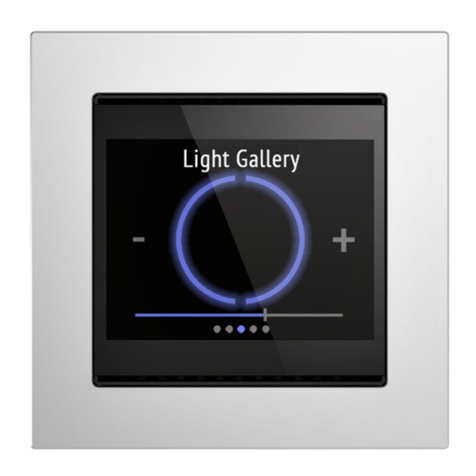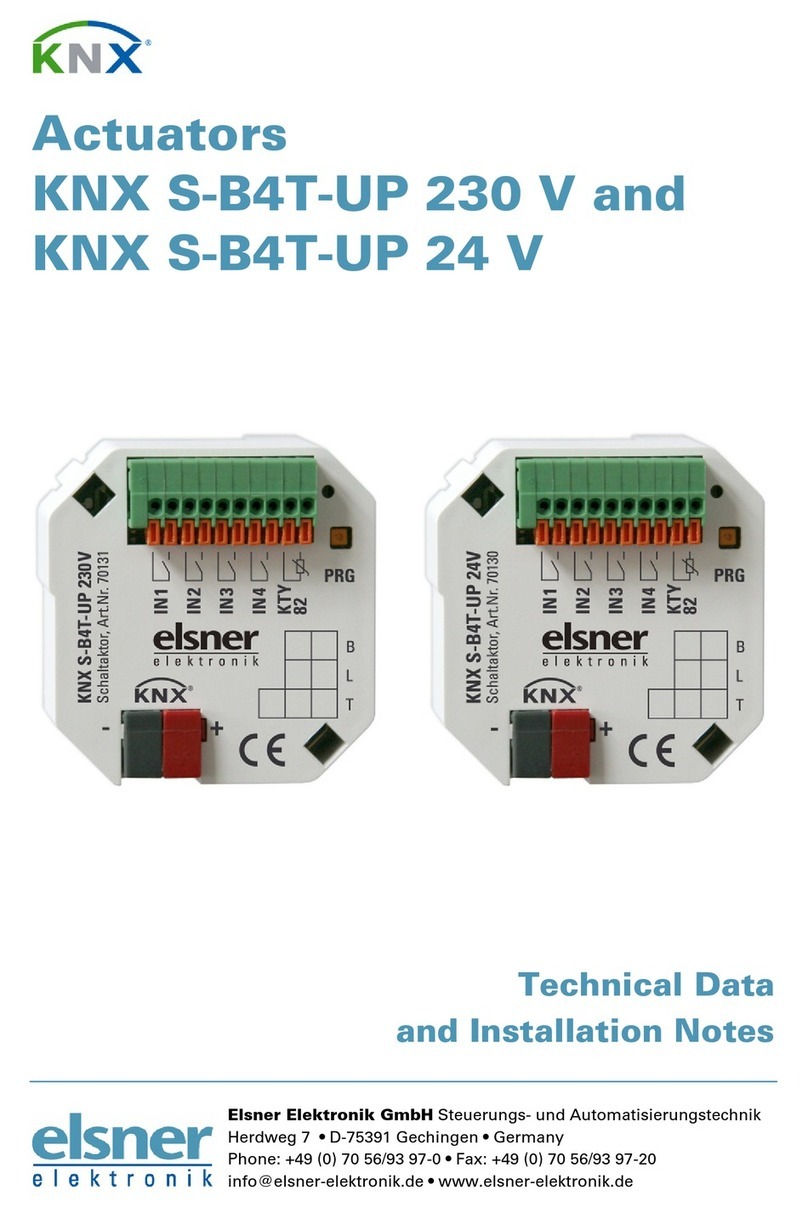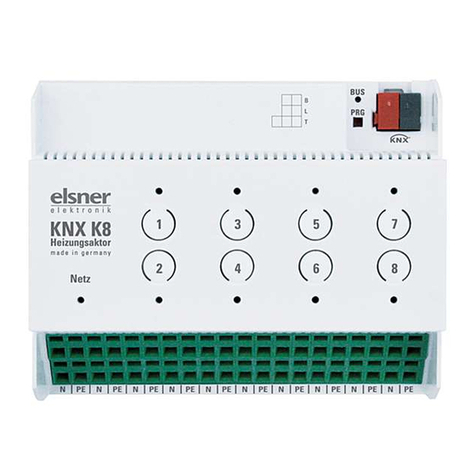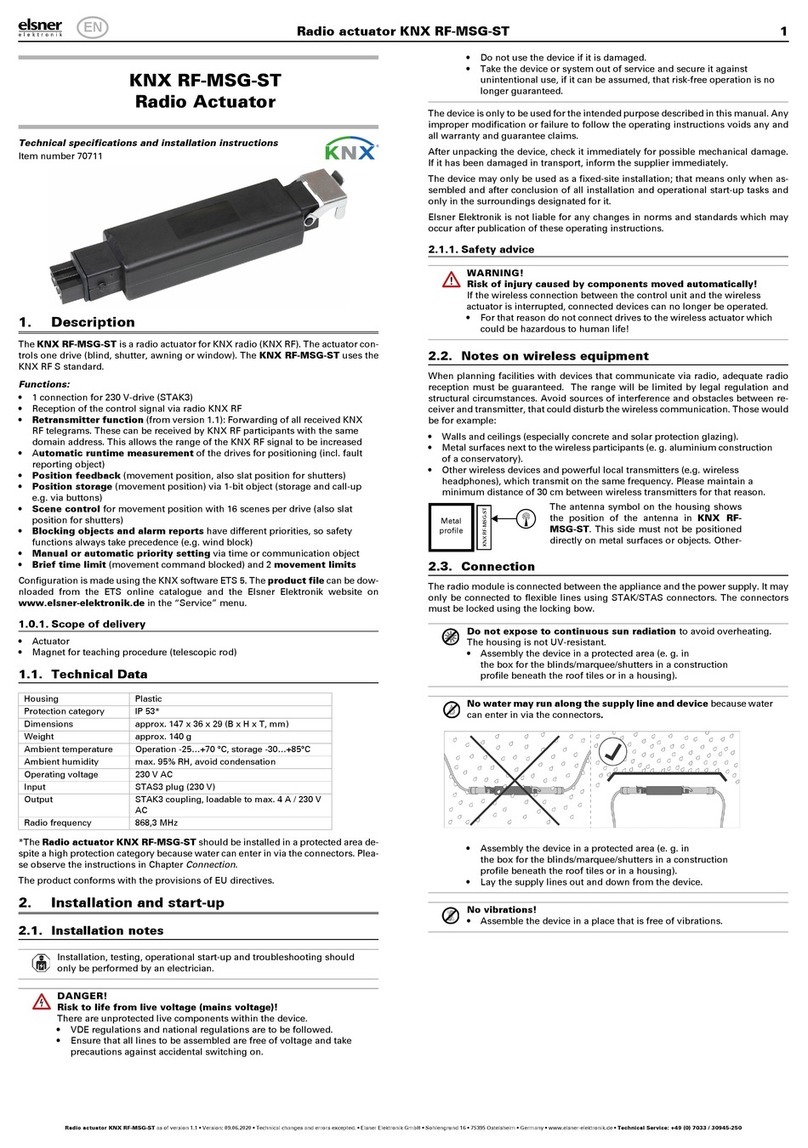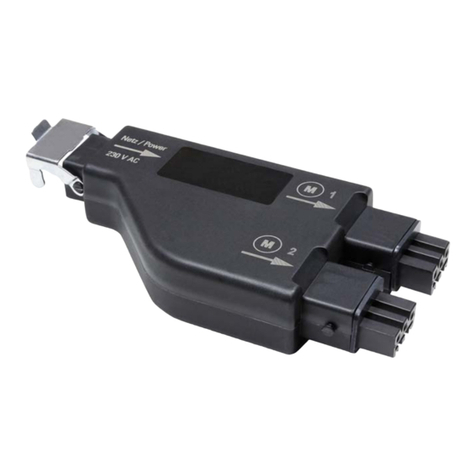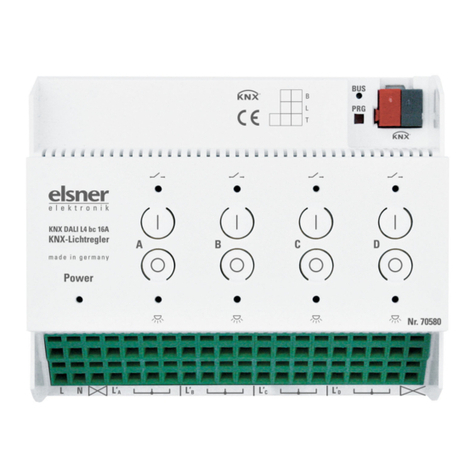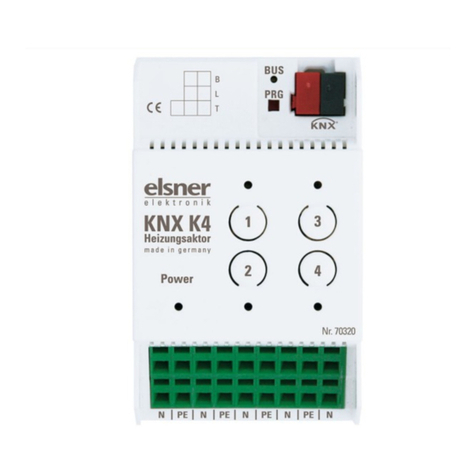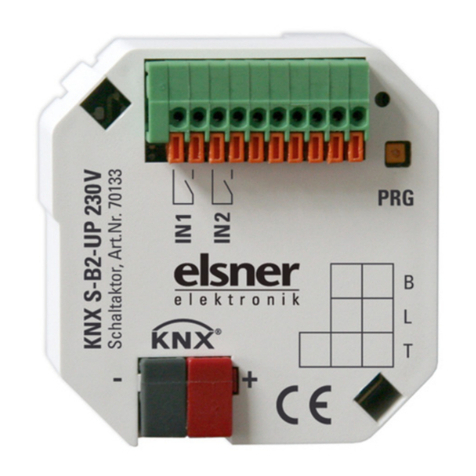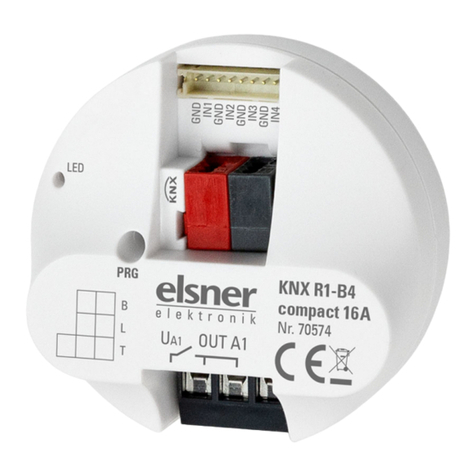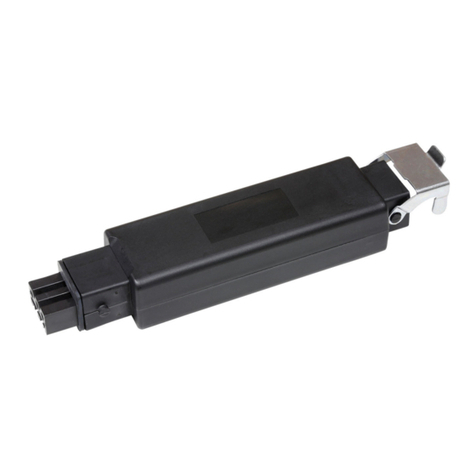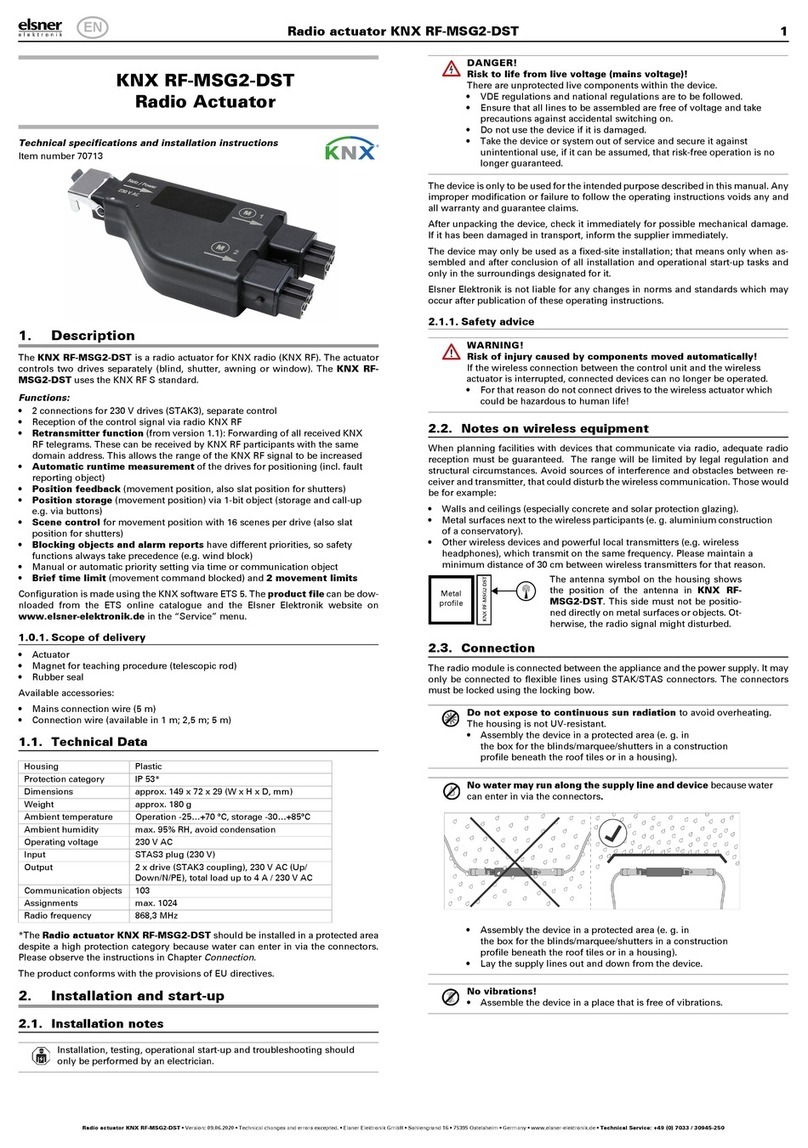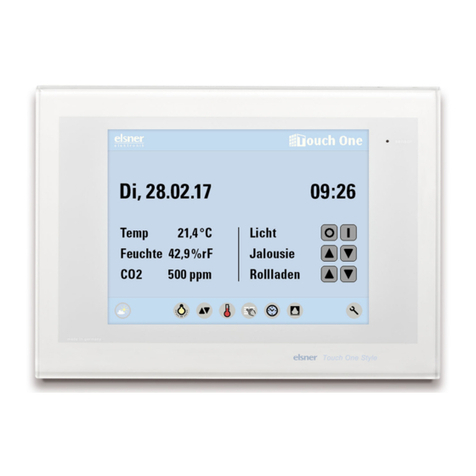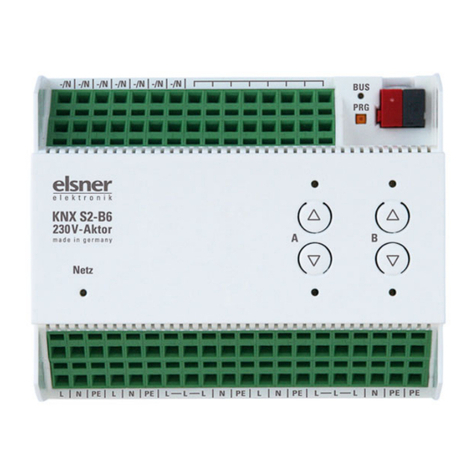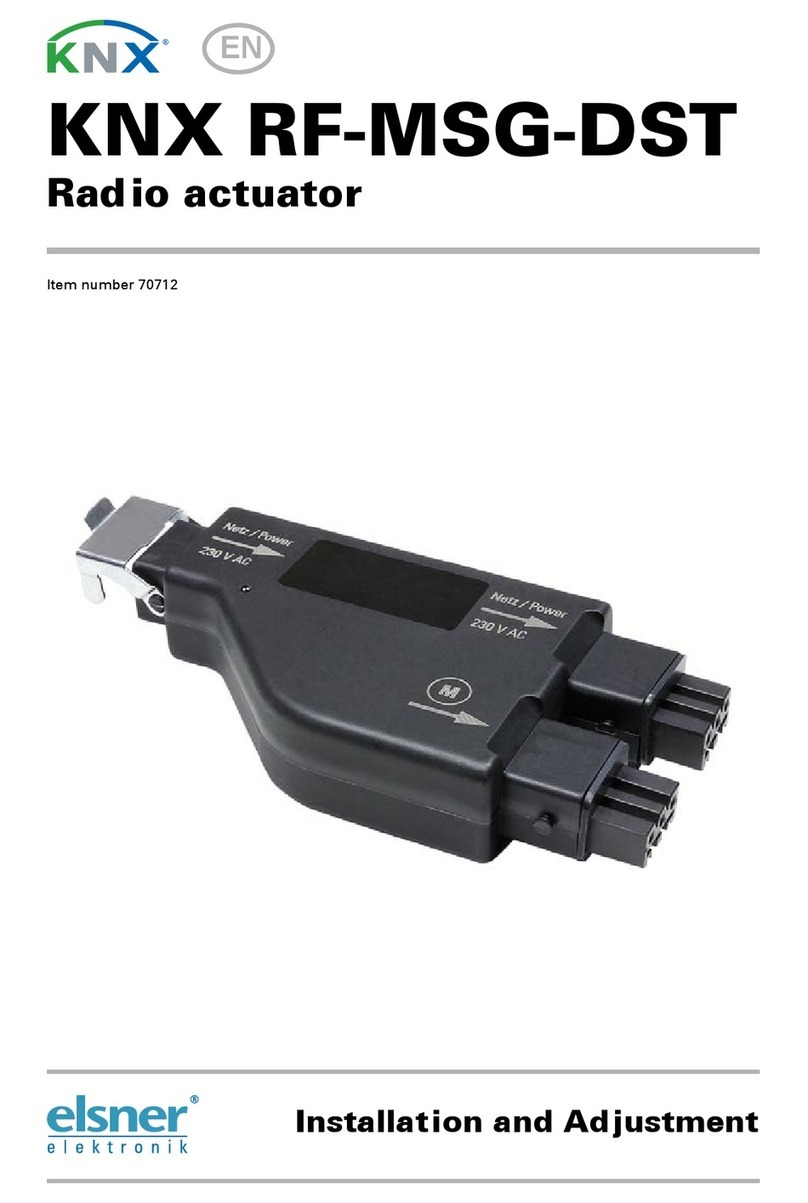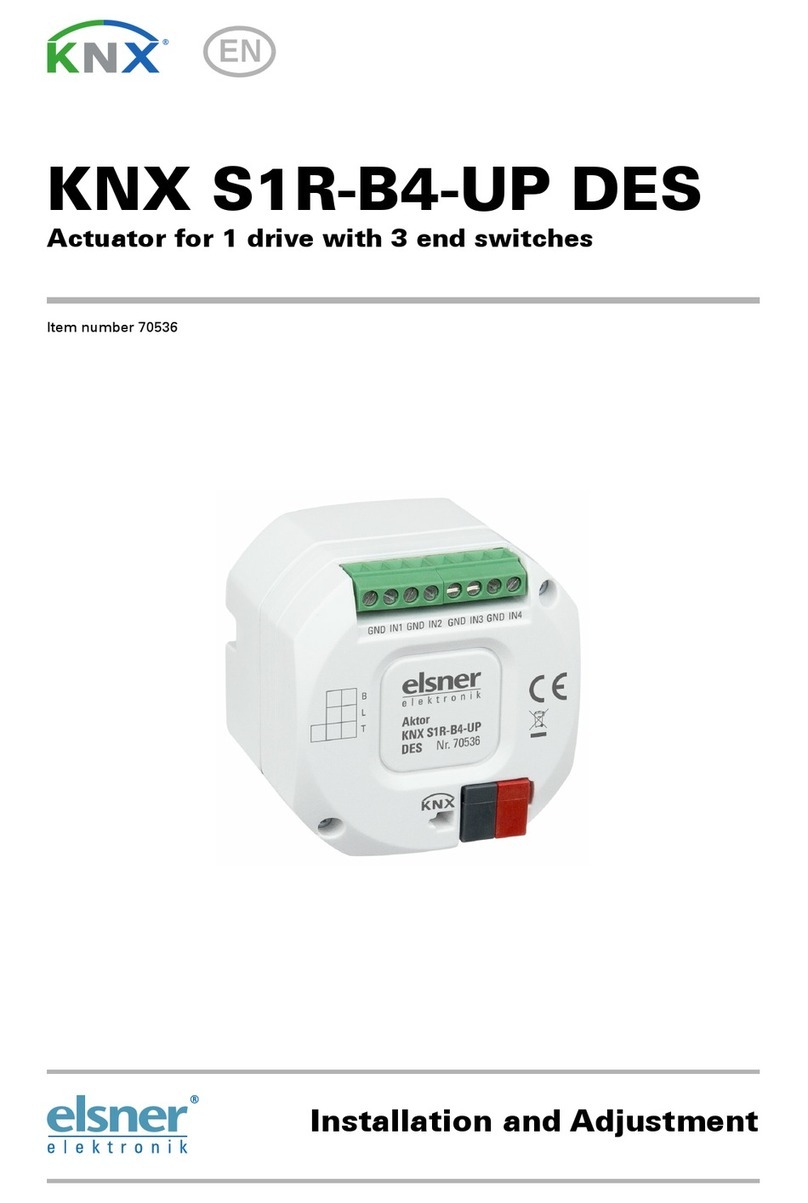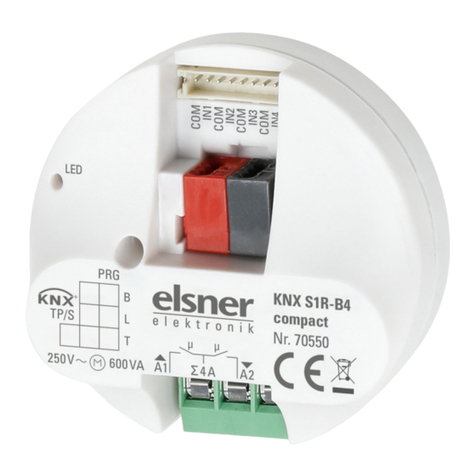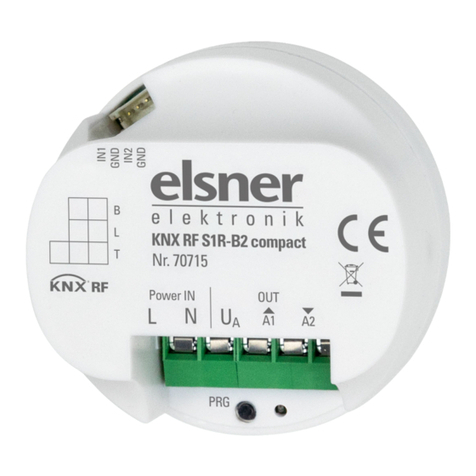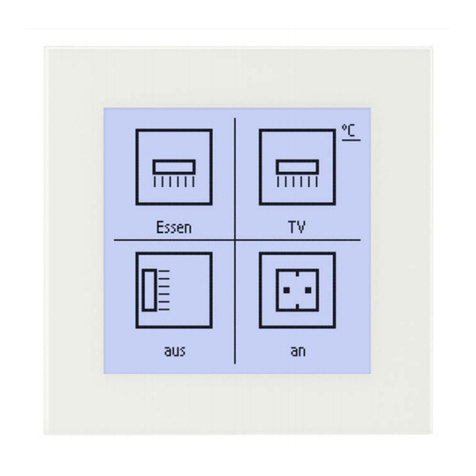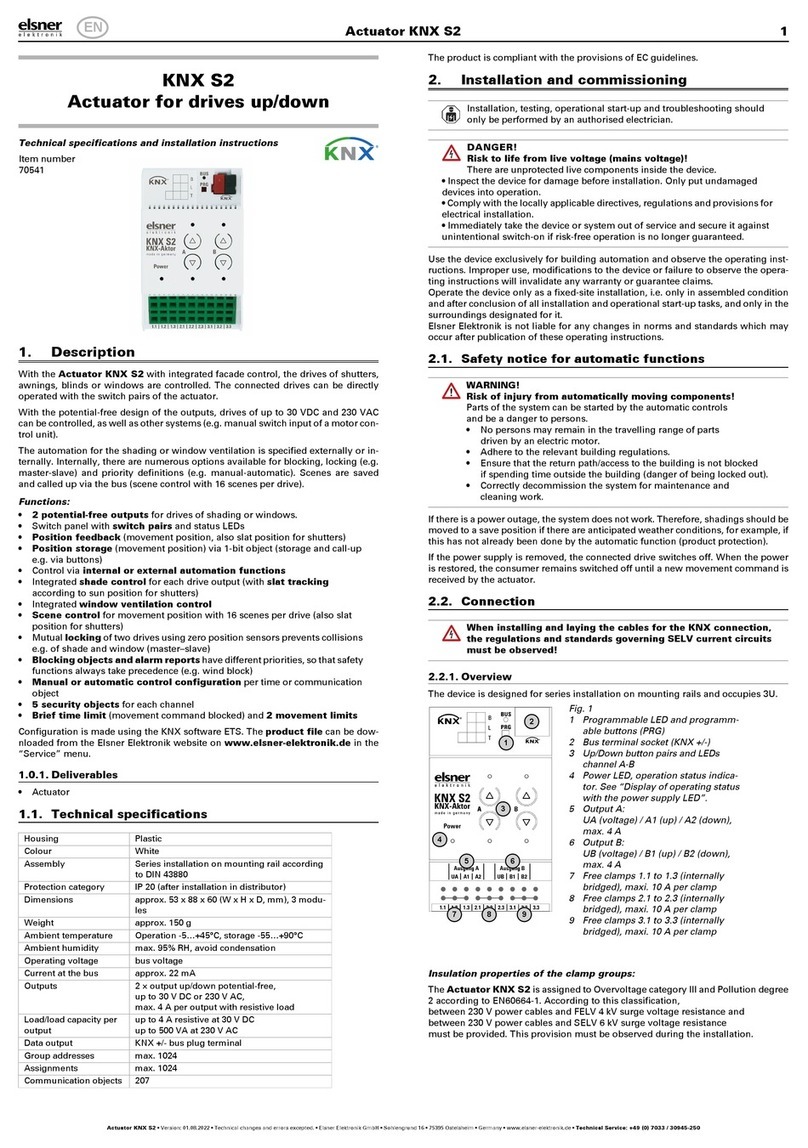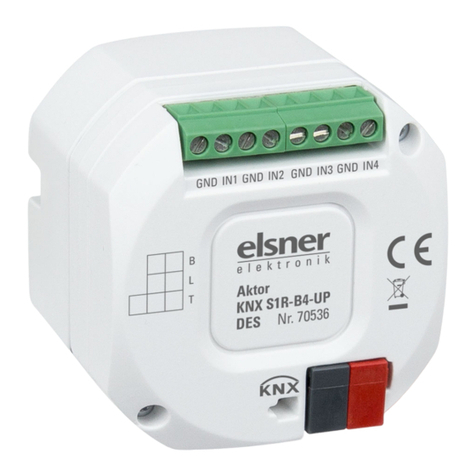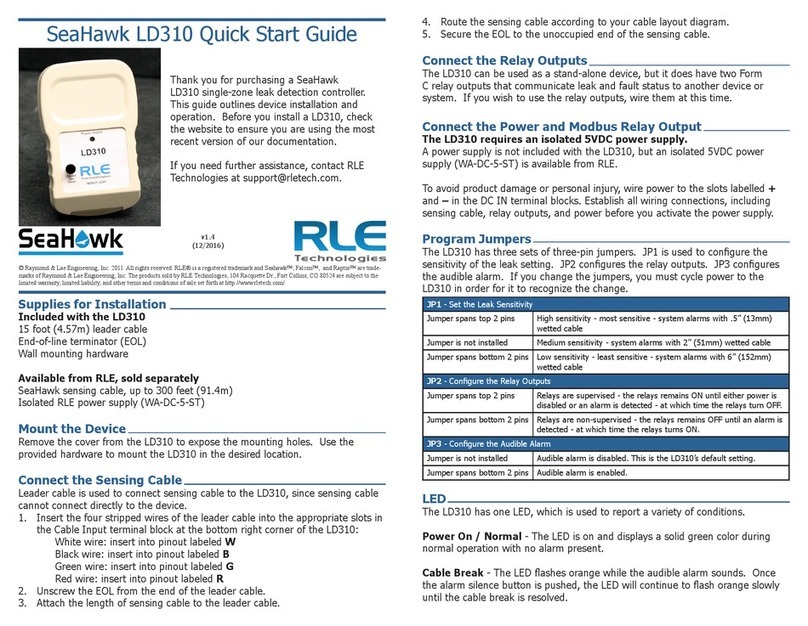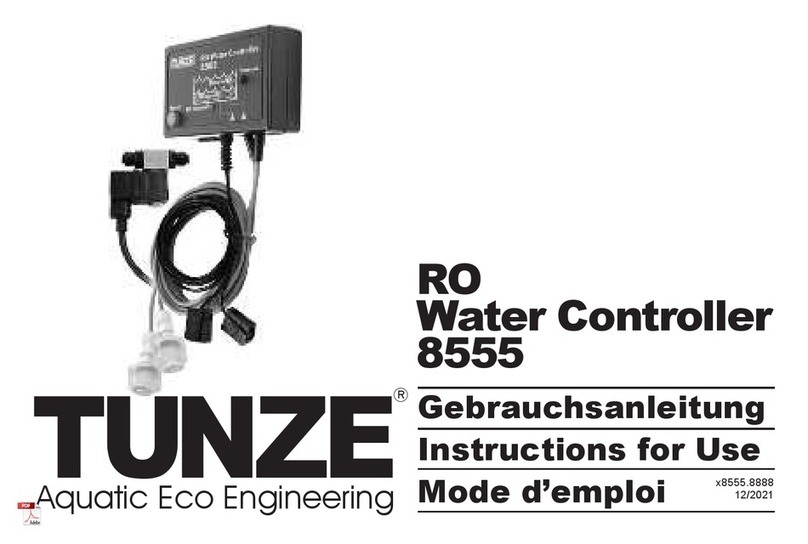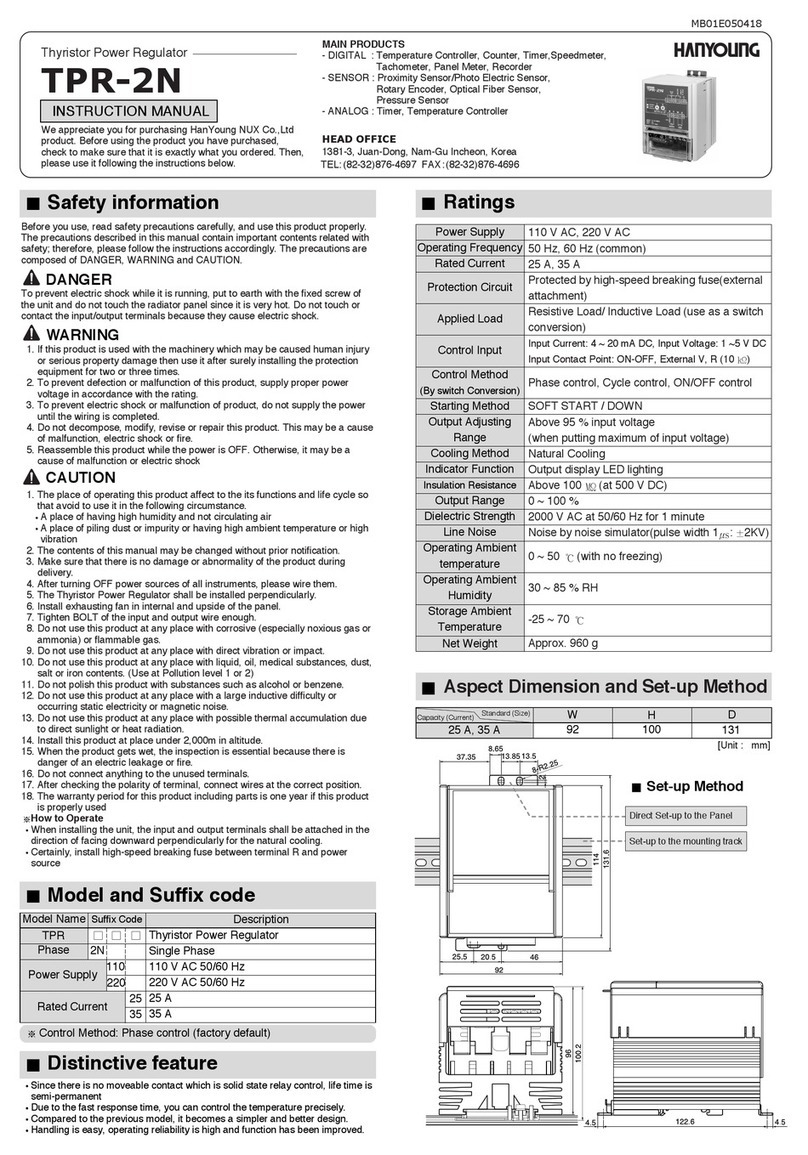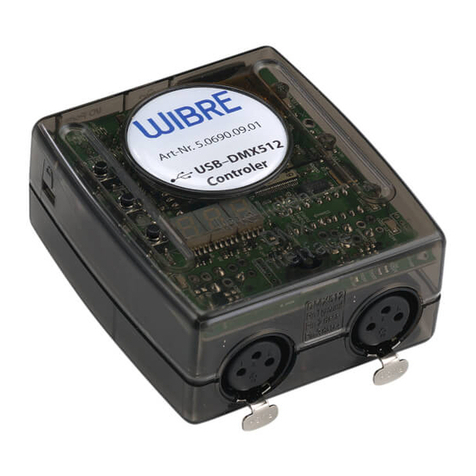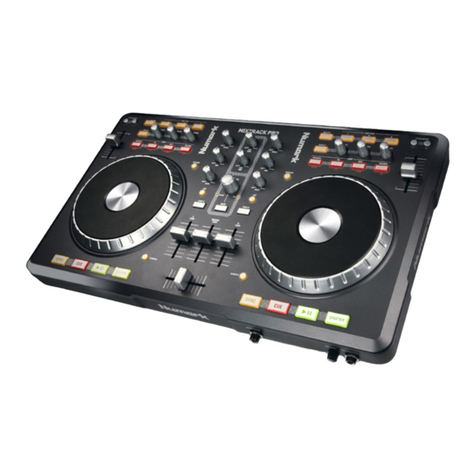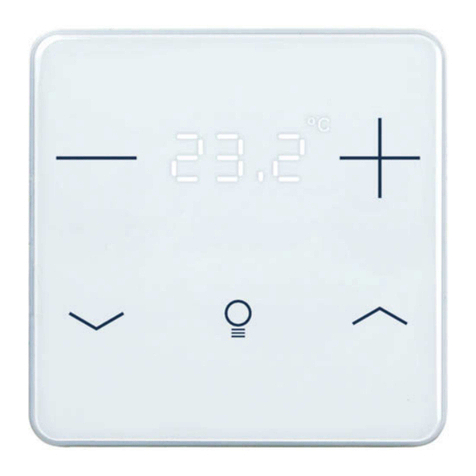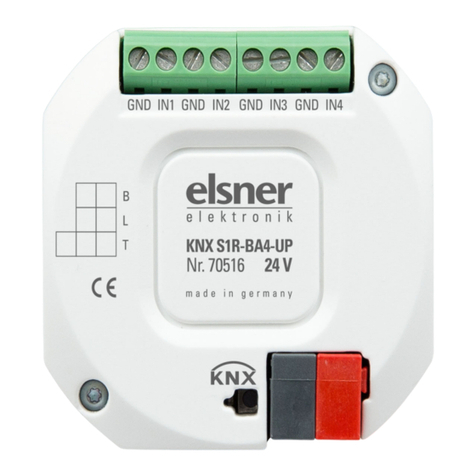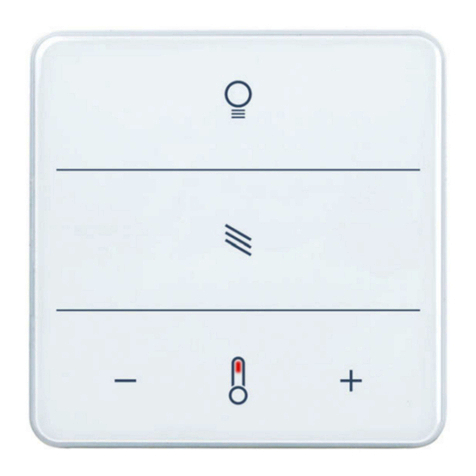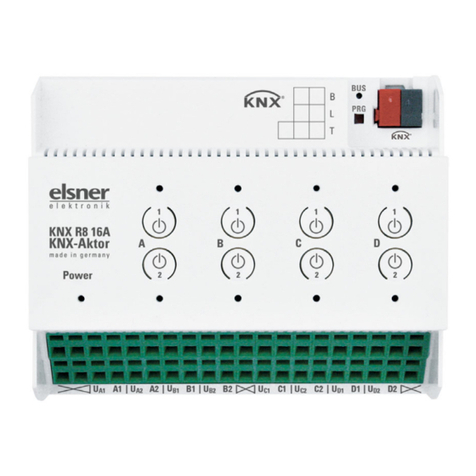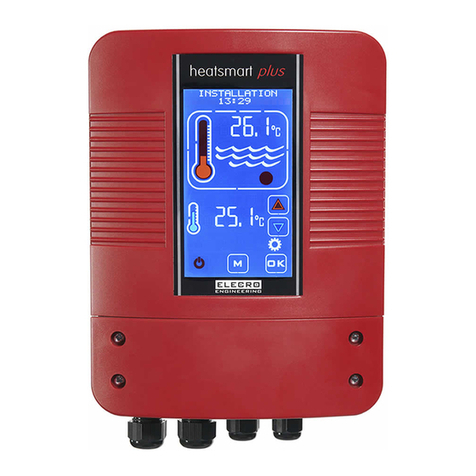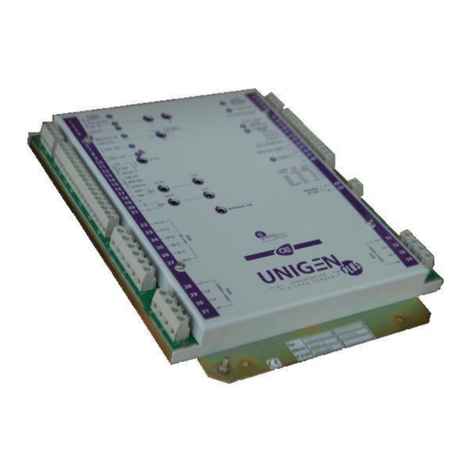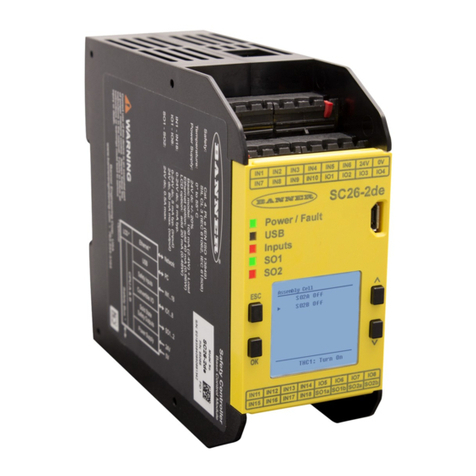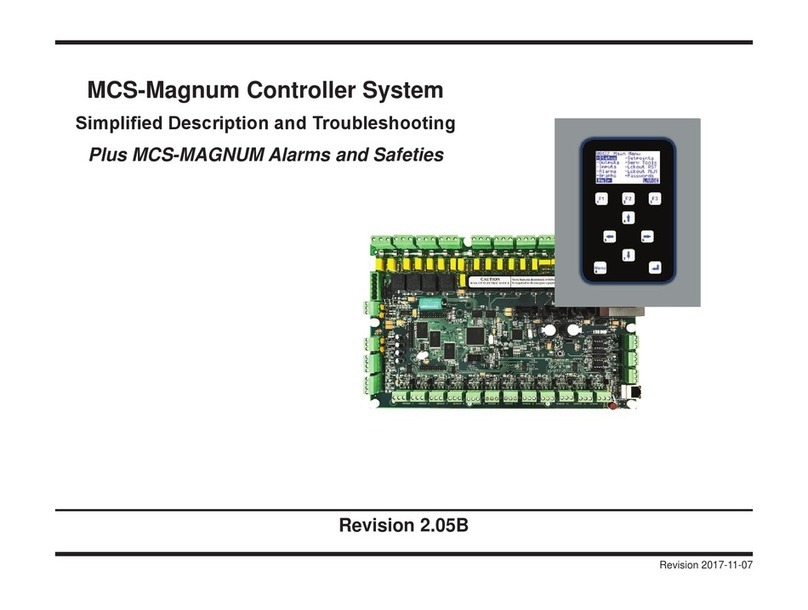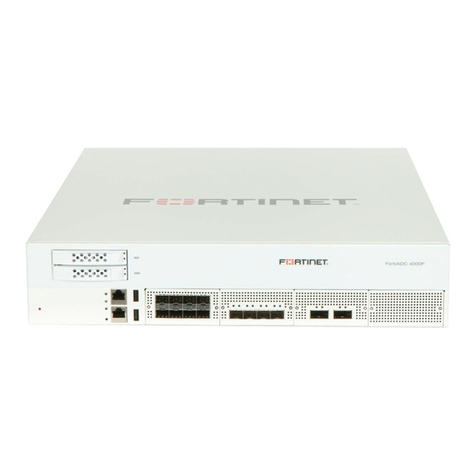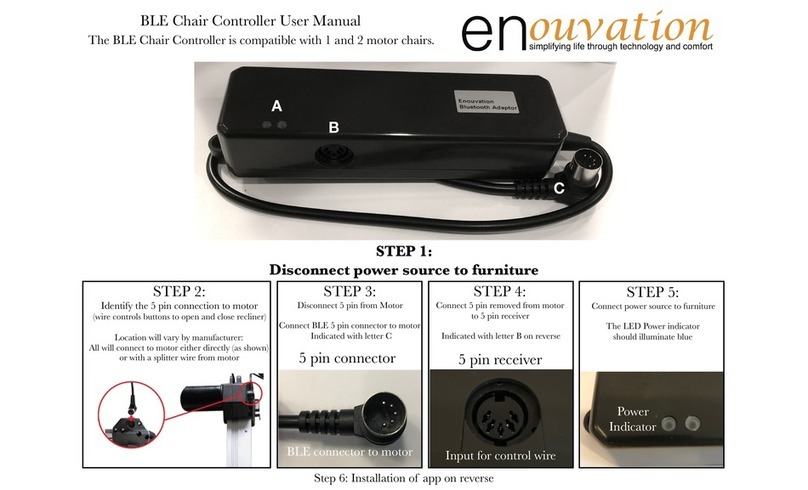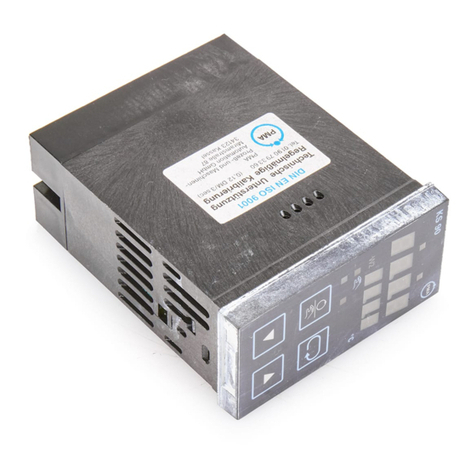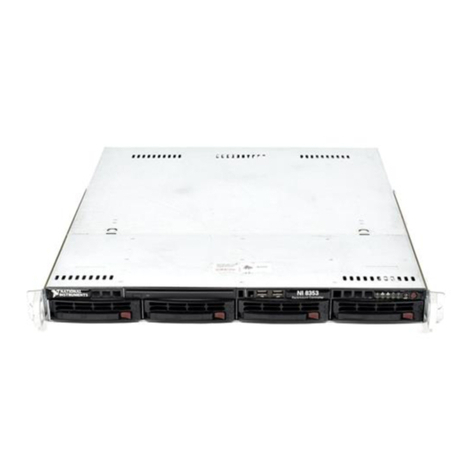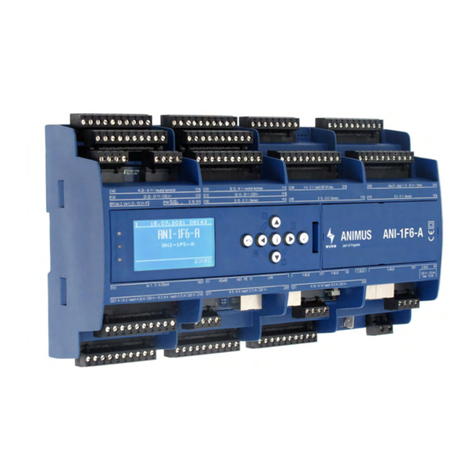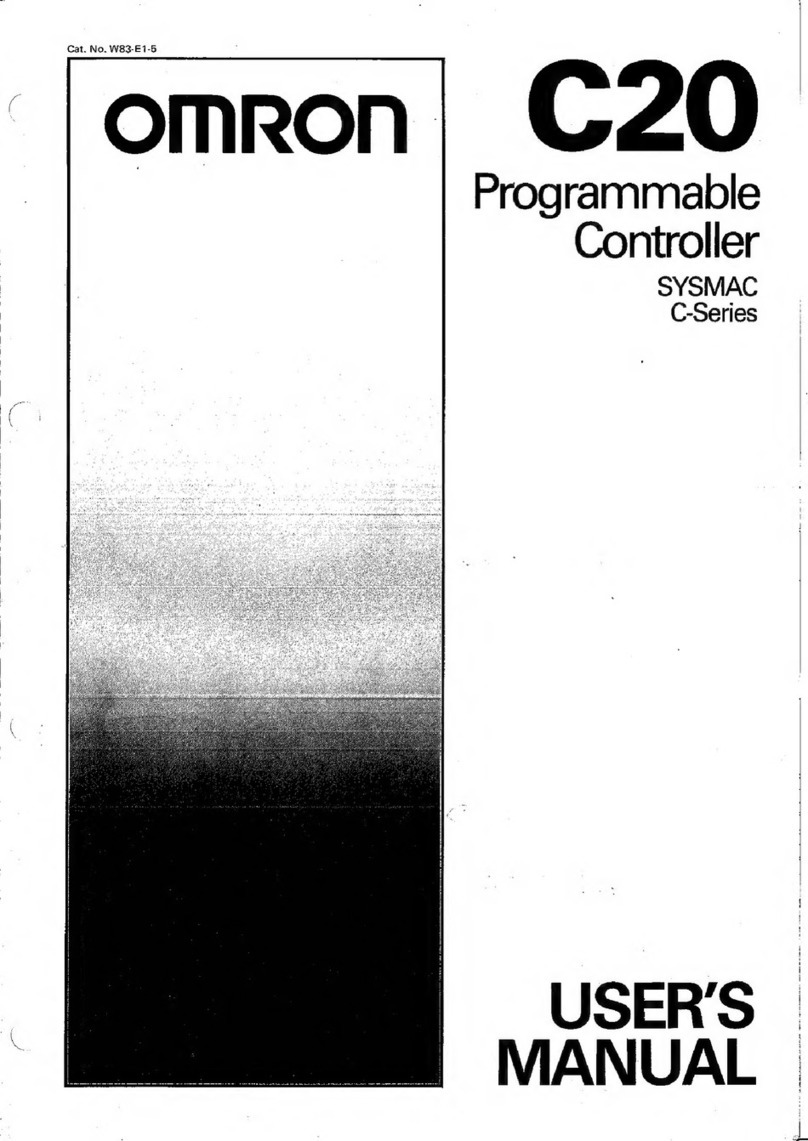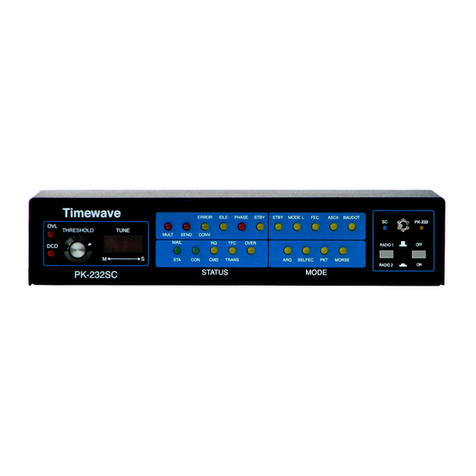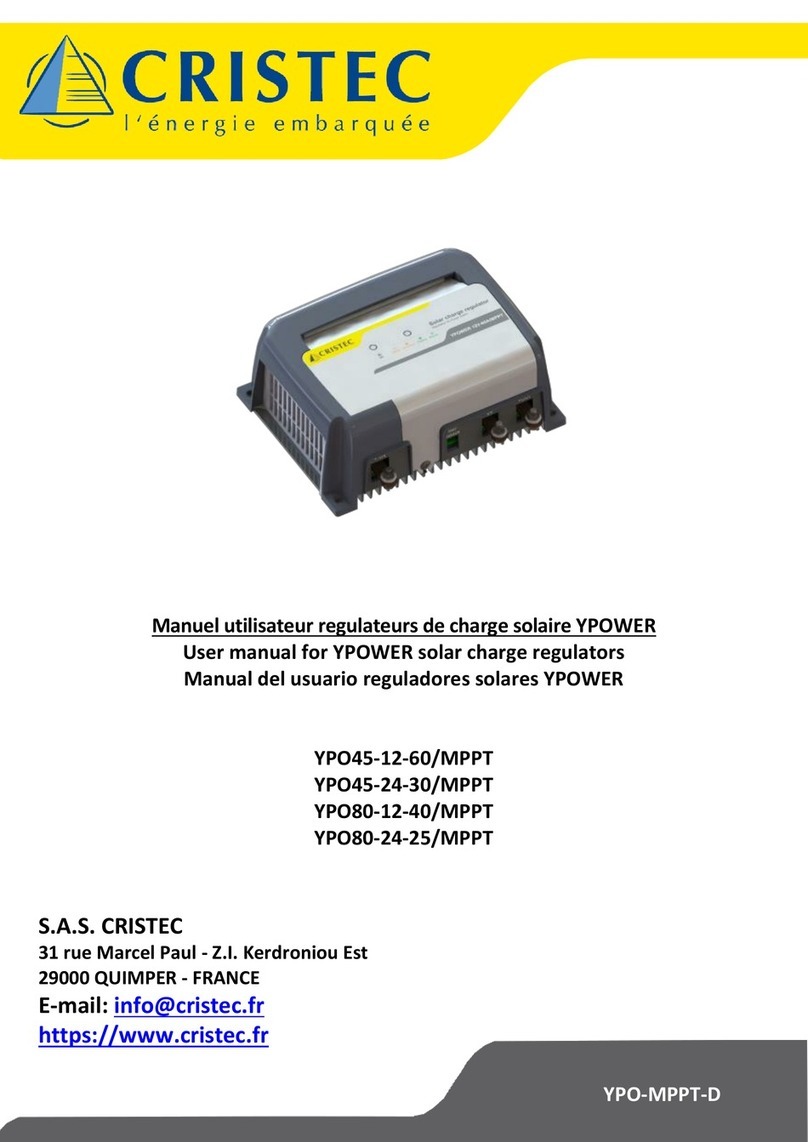
KNX S4-B12 DES actuator 1
KNX S4-B12 DES actuator • Version: 28.05.2020 • Technical changes and errors excepted. • Elsner Elektronik GmbH • Sohlengrund 16 • 75395 Ostelsheim • Germany • www.elsner-elektronik.de • Technical Service: +49 (0) 7033 / 30945-250
EN
KNX S4-B12 DES
for 4 Drives with 3 Limit Switches
Technical specifications and installation instructions
1. Description
The KNX S4-B12 DES actuator is an electronic control device for controlling up
to 4 motors with 3 limit switches. A 230 V AC power supply is needed for the actua-
tor and motors.
Functions:
•4 motor outputs each for one motor with 3 limit switches (shutters with
working position)
• Switch panel with 4 switch pairs and status LEDs
•12 binary input for use as manual or bus button
•Position feedback of the movement position
•Position storage (movement position) via 1-bit object (storage and call-up,
e.g. by button)
• Controls through internal or external automatic operation
• Integrated shading control for each motor output
•Scene control for movement position with 16 scenes per motor
• Blocking objects and alarm messages have different priorities so that safety
functions always have priority (e.g. wind blocking)
•Manual or automatic control configuration per time or communication
object
Configuration is made using the KNX software ETS 5. The product file can be dow-
nloaded from the ETS online catalogue and the Elsner Elektronik website on
www.elsner-elektronik.de in the “Service” menu.
1.0.1. Scope of delivery
•Actuator
1.1. Technical data
The product is compliant with the provisions of EU Directives.
2. Installation and commissioning
2.1. Installation notes
Installation, testing, operational start-up and troubleshooting should
only be performed by an electrician.
CAUTION!
Live voltage!
There are unprotected live components inside the device.
• National legal regulations are to be followed.
• Ensure that all lines to be assembled are free of voltage and take
precautions against accidental switching on.
• Do not use the device if it is damaged.
• Take the device or system out of service and secure it against
unintentional use, if it can be assumed, that risk-free operation is
no longer guaranteed.
The device is only to be used for the intended purpose described in this manual. Any
improper modification or failure to follow the operating instructions voids any and
all warranty and guarantee claims.
After unpacking the device, check it immediately for possible mechanical damage.
If it has been damaged in transport, inform the supplier immediately.
The device may only be used as a fixed-site installation; that means only when as-
sembled and after conclusion of all installation and operational start-up tasks and
only in the surroundings designated for it.
Elsner Elektronik is not liable for any changes in norms and standards which may
occur after publication of these operating instructions.
2.2. Safety notice for automatic functions
WARNING!
Risk of injury from automatically moving components!
Parts of the system can be started by the automatic controls
and be a danger to persons.
• No persons may remain in the travelling range of parts
driven by an electric motor.
• Adhere to the relevant building regulations.
• Ensure that the return path/access to the building is not blocked
if spending time outside the building (danger of being locked out).
• Correctly decommission the system for maintenance and
cleaning work.
If there is a power outage, the system does not work. Therefore, shadings should be
moved to a save position if there are anticipated weather conditions, for example, if
this has not already been done by the automatic function (product protection).
If the power supply is removed, the connected drive switches off. When the power
is restored, the consumer remains switched off until a new movement command is
received by the actuator.
2.3. Connection
The device is suitable for operating in dry interiors. Connection according to wiring
diagram. For maintenance purposes, accessibility to the device must be guaranteed.
When installing and laying cables to the KNX connection and
the inputs for the SELV power circuits, observe the applicable
provisions and standards!
The connections for the binary inputs, including the auxiliary voltage output,
meet the requirements for SELV circuits. Mixed installation with non-SELV
circuits or mixing different auxiliary voltages is not permitted.
2.3.1. Device structure
The device is designed for series installation on mounting rails and occupies 6 mo-
dule units.
1 Output 12 V / GND
2 Internal auxiliary voltage 12 V DC, only for binary inputs
3 Binary inputs 1-12 (1 to 4: 2 connections each)
Housing Plastic
Colour White
Assembly Series installation on mounting rail
Protection category IP 20
Dimensions approx. 107 × 88 × 60 (W × H × D, mm),
6 module units
Weight approx. 340 g
Ambient temperature Operation -20…+45°C, storage -55…+90°C
Ambient humidity max. 95% RH, avoid condensation
Operating voltage 230V AC, 50 Hz
Power consumption Operation max. approx. 3.5 W
Standby max. approx. 0.6 W
Power on bus: 10 mA
Outputs 4 x motors with 2 lower end switches
(UP/DOWN1/DOWN2/N/PE).
total max. 10 A and max. 4 A per output
Maximum load Each terminal contact may be loaded with a
maximum of 10 A.
Inputs 12 × binary input, for 12 V DC
Max. cable length
Binary inputs
50 m
Data output KNX +/- bus plug terminal
BCU type Own microcontroller
PEI type 0
Group addresses max. 1024
Allocations max. 1024
Communication objects 757
